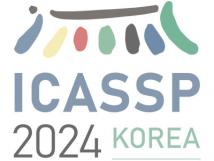
IEEE ICASSP 2024 - IEEE International Conference on Acoustics, Speech and Signal Processing (ICASSP) is the world’s largest and most comprehensive technical conference focused on signal processing and its applications. The IEEE ICASSP 2024 conference will feature world-class presentations by internationally renowned speakers, cutting-edge session topics and provide a fantastic opportunity to network with like-minded professionals from around the world. Visit the website.

- Read more about Improving ASR Contextual Biasing using Guided Attention Loss
- Log in to post comments
In this paper, we propose a Guided Attention (GA) auxiliary training loss, which improves the effectiveness and robustness of automatic speech recognition (ASR) contextual biasing without introducing additional parameters. A common challenge in previous literature is that the word error rate (WER) reduction brought by contextual biasing diminishes as the number of bias phrases increases. To address this challenge, we employ a GA loss as an additional training objective besides the Transducer loss.
- Categories:
 42 Views
42 Views
- Read more about FSPEN: An Ultra-Lightweight Network for Real Time Speech Enhancement
- Log in to post comments
Deep learning-based speech enhancement methods have shown promising result in recent years. However, in practical applications, the model size and computational complexity are important factors that limit their use in end-products. Therefore, in products that require real-time speech enhancement with limited resources, such as TWS headsets, hearing aids, IoT devices, etc., ultra-lightweight models are necessary. In this paper, an ultra-lightweight network FSPEN is proposed for real-time speech enhancement task.
poster.pptx
- Categories:
 97 Views
97 Views
- Read more about TB-RESNET: BRIDGING THE GAP FROM TDNN TO RESNET IN AUTOMATIC SPEAKER VERIFICATION WITH TEMPORAL-BOTTLENECK ENHANCEMENT
- Log in to post comments
This paper focuses on the transition of automatic speaker verification systems from time delay neural networks (TDNN) to ResNet-based networks. TDNN-based systems use a statistics pooling layer to aggregate temporal information which is suitable for two-dimensional tensors. Even though ResNet-based models produce three-dimensional tensors, they continue to incorporate the statistics pooling layer.
- Categories:
 39 Views
39 Views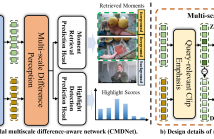
- Read more about Cross-modal Multiscale Difference-aware Network for Joint Moment Retrieval and Highlight Detection
- Log in to post comments
Since the goals of both Moment Retrieval (MR) and Highlight Detection (HD) are to quickly obtain the required content from the video according to user needs, several works have attempted to take advantage of the commonality between both tasks to design transformer-based networks for joint MR and HD. Although these methods achieve impressive performance, they still face some problems: \textbf{a)} Semantic gaps across different modalities. \textbf{b)} Various durations of different query-relevant moments and highlights. \textbf{c)} Smooth transitions among diverse events.
CMDNet_04_13.pdf
- Categories:
 44 Views
44 Views
- Read more about Less peaky and more accurate CTC forced alignment by label priors
- 1 comment
- Log in to post comments
Connectionist temporal classification (CTC) models are known to have peaky output distributions. Such behavior is not a problem for automatic speech recognition (ASR), but it can cause inaccurate forced alignments (FA), especially at finer granularity, e.g., phoneme level. This paper aims at alleviating the peaky behavior for CTC and improve its suitability for forced alignment generation, by leveraging label priors, so that the scores of alignment paths containing fewer blanks are boosted and maximized during training.
aligner.pdf
- Categories:
 41 Views
41 Views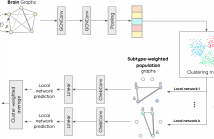
- Read more about Subtype-specific biomarkers of Alzheimer's disease from anatomical and functional connectomes via graph neural networks
- Log in to post comments
Heterogeneity is present in Alzheimer’s disease (AD), making it challenging to study. To address this, we propose a graph neural network (GNN) approach to identify disease subtypes from magnetic resonance imaging (MRI) and functional MRI (fMRI) scans. Subtypes are identified by encoding the patients’ scans in brain graphs (via cortical similarity networks) and clustering the representations learnt by the GNN.
- Categories:
 43 Views
43 Views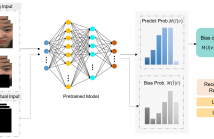
- Read more about CAUSALLY UNCOVERING BIAS IN VIDEO MICRO-EXPRESSION RECOGNITION
- Log in to post comments
Detecting microexpressions presents formidable challenges, primarily due to their fleeting nature and the limited diversity in existing datasets. Our studies find that these datasets exhibit a pronounced bias towards specific ethnicities and suffer from significant imbalances in terms of both class and gender representation among the samples. These disparities create fertile ground for various biases to permeate deep learning models, leading to skewed results and inadequate portrayal of specific demographic groups.
- Categories:
 21 Views
21 Views
Deep learning-based methods provide remarkable performance in a number of computational imaging problems. Examples include end-to-end trained networks that map measurements to unknown signals, plug-and-play (PnP) methods that use pretrained denoisers as image prior, and model-based unrolled networks that train artifact removal blocks. Many of these methods lack robustness and fail to generalize with distribution shifts in data, measurements, and noise. In this paper, we present a simple framework to perform domain adaptation as data and measurement distribution shifts.
- Categories:
 37 Views
37 Views
- Read more about [Poster] Crowdsourced and Automatic Speech Prominence Estimation
- Log in to post comments
The prominence of a spoken word is the degree to which an average native listener perceives the word as salient or emphasized relative to its context. Speech prominence estimation is the process of assigning a numeric value to the prominence of each word in an utterance. These prominence labels are useful for linguistic analysis, as well as training automated systems to perform emphasis-controlled text-to-speech or emotion recognition. Manually annotating prominence is time-consuming and expensive, which motivates the development of automated methods for speech prominence estimation.
- Categories:
 18 Views
18 Views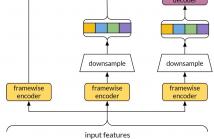
- Read more about [Paper] Crowdsourced and Automatic Speech Prominence Estimation
- Log in to post comments
The prominence of a spoken word is the degree to which an average native listener perceives the word as salient or emphasized relative to its context. Speech prominence estimation is the process of assigning a numeric value to the prominence of each word in an utterance. These prominence labels are useful for linguistic analysis, as well as training automated systems to perform emphasis-controlled text-to-speech or emotion recognition. Manually annotating prominence is time-consuming and expensive, which motivates the development of automated methods for speech prominence estimation.
- Categories:
 29 Views
29 Views